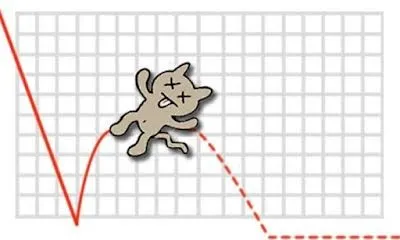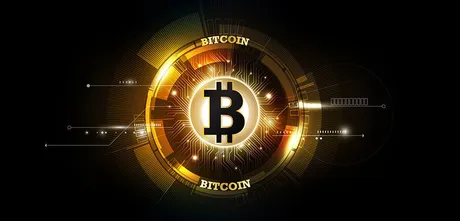
Oh no everyone!
@edicted has gone crazy!
Poor @edicted's brain is melting because he thinks that increasing inflation raises token price and decreasing inflation lowers it. It's a shame really. We lost a good one.
No, seriously though.
Bitcoin has everyone's brain scrambled into thinking that deflationary economics are a good idea. They are not. We've known they are not for over 100 years. Bitcoin comes along and makes x2 gains every year and all of a sudden everyone thinks it's a good idea. Again, it is not.
Bitcoin rewards the early adopters and creates massive supply shocks every four years that fuck over new users and hamstring its own growth. However, the legacy economy is so fucked, and solving the Byzantine General's problem was such a miracle, that people now wrongfully believe that deflationary economics are a good idea. The best actually. It's a sick joke.
The goal is stability.
All currencies have three main goals:
- Medium of exchange.
- Store of value.
- Unit of account.
Before crypto, it was impossible to have all three of these things. You could choose two but the third would be left out. For example, gold isn't a great medium of exchange because it's heavy and not very divisible. It's also not a good unit of account because it stores value and the price is quite variable depending on when users are hording/dumping it.
Fiat currency is a great unit of account. It's so good most people in the world can measure the price of goods and services in USD even if it's not their native currency. Of course store of value gets sacrificed here. The value of USD will never go up over time. With the advent of the Internet and online banking (and cash), it became a superior medium of exchange compared to silver/copper coins (which is more divisible than gold).

Dat Crypto Doe!
With crypto we can have it all. We can get all three. It's already a superior medium of exchange because it is more divisible than any fiat currency and it is connected to every other crypto via exchange pairs. The borderless permissionless nature of crypto makes it superior for moving money around worldwide.
It's also an obvious store of value, the real big problem is unit-of-account. How do we keep the price stable enough to actually price goods and services when it's a store of value and the prices keep spiking x2 every year on average? The answer seemed impossible until 2021 rolled around.

Yield farms.
The answer has presented itself in spectacular fashion. There is no doubt in my mind that a yield farming asset will surpass Bitcoin in market cap: probably within the next ten years. Only by having high inflation allocated to the community fairly will a crypto be able to attain all three coveted attributes.
With yield farming, we see that it's not about the token price going up. In fact we would only want the token price to go up 10% or less every year so that we can measure the prices of goods an services with the token. The goal is to have the highest SUSTAINABLE yield so that even though token price isn't going up, holders are still getting rich and pumping that value back into the system.

Magitek
The token I am working on will try to accomplish all the things I've been talking about over the last three years. We need to take all the good stuff crypto has created, looking at all the trends, and create a superior prototype asset.
- NFT
- High Yield Farms
- Automated Market Makers
- Algorithmic stable coin
- CDP loan futures market
- DPOS voting structures
- Gaming
That's right, boys and girls.
I am working on a project that incorporates all of this, and I'm adding my own secret sauce of proof-of-burn, which is going to destroy a massive amount of Hive/HBD in addition to other coins once the associated oracle nodes can be trusted.
INFLATION
Okay, so, you're farming a yield and the yield is dropping and the token price is falling to dangerously low levels, what do you do? Ask 99% of the people in the cryptosphere: you need to reduce inflation to lower the supply to increase price. Yeah, that's exactly the opposite thing that needs to happen.
Reducing inflation lowers yield. Lower yield causes even more selling. The price won't pop back up until there's a supply shock, and a supply shock is exactly what we don't want. Supply shocks are bad, not good. We want a healthy supply and enough tokens for everyone.

Every economist knows that a struggling economy needs liquid cash injections to stimulate the market. It's just like drinking a cup of coffee or smoking some meth: the inflation injection is a temporary quick fix if the market is lower than it should be.
How does this work?
Well if the community decides what the inflation print rate is, and the community has a good idea of the true valuation of their own token, the mechanics are simple. When inflation gets increased yields also get increased. Yield farmers will get extremely greedy knowing that inflation is high now, meaning lots of coins are going to get minted. They want those coins, especially with the knowledge that inflation will be lowered later: that is when they will sell (when yields drop and they're farming less).
So yes, it becomes obvious that if you want a higher token price we ironically have to INCREASE THE SUPPLY. It's totally contrary to what everyone seems to believe, which is why someone like me can swoop in with this prototype and show the world how it's done. This is a test to see if we've been doing it wrong this whole time, which I believe is absolutely the case.

Imagine if Cub just decided to double its inflation right now. What would happen? First of all we have to ask how that inflation is allocated, because after all there are 12 different farms that receive yield.
The most obvious place to apply inflation if we want to increase the price of CUB is the DEN. Right now we have x15 multiplier on the CUB den. What would happen if we raised that to x60 and then doubled total inflation?
I'll tell you what would happen: the price of CUB would moon. Especially if you tell the community this is a temporary measure, lots and lots of CUB is going to move from the LP pools (getting bought) into the DEN. The price can only go up from where it is now.
Do I think CUB should do this? Not really, that's a huge overreaction to the 'problem'. I think we need sliding-scale governance votes that move these numbers around slowly over time rather than all at once.
In addition, increasing the DEN yield is a holy-shit last-resort measure. First, if we want to stimulate price, the LP pools should be incentivized to see if users will buy from the pool and compound farm it. This increases liquidity and creates a more stable environment, while increasing den yield reduces liquidity and cannibalizes the token in order to achieve short-term gains.
However, that strategy will only work if money is coming in from the outside. If users are just dumping their daily farm back into the LPs to compound farm the price will continue to go down, and the only way to increase the price is to cannibalize the LPs by increasing DEN yield.

Analysis
If we raise inflation while the token price is undervalued this will automatically bump up the price. If we lower inflation while the token price is overvalued it will lower the price. This is extremely counterintuitive but it is 100% true. The trick is knowing what the true valuation of the token is in the first place.
I believe the obvious place to start is the x2 doubling curve. The goal is to create a stable asset price with extremely high yield. Meaning: inflation should start a +100% per year in order to try to maintain a stable price. Once the optimal price is discovered the community then raises inflation when it dips and lowers inflation when it spikes.
Again, if price goes up when inflation is decreased that means a supply shock has occurred and the price target is incorrect. The real value of the token is higher, and the network must engage in price discovery once again to try and find it. Conversely, if the price dips when yield is increased that means the network has overvalued their token price and a lower target must be discovered.
The crux of this ENTIRE economic scheme is that ALL users control inflation. This is not true about most networks. On Bitcoin and Ethereum, the only users that control inflation are the miners. This is a very small subset of total users so manipulating inflation in these ways will not work. However, the scheme is perfect for yield farms and probably pretty good for "proof-of-brain" economics (maybe even better because inflation is allocated intelligently instead of statically to each user).
Hive?
It's important to note that on Hive all users do control inflation (meaning this strategy will work for Hive). Hive is the original defi network, and we have a lot of work to do if we are going to catch up to the rest of these guys. We need to fix HBD with CDP smart contracts and convert the internal market (Hive/HBD) into an AMM yield farm. It's painfully obvious.
Considering Hive only has 8% inflation and everyone is trying to say we need even less, I find that absolutely ridiculous. Like I said, I think we need about 100% inflation per year in order to maintain a stable price. If we increased Hive inflation to 100% from 8% the price would fucking moon hard and we'd be forced to guess what the true valuation of the token was. No easy feat. That's why these numbers need to move slowly via DPOS governance voting so the community can constantly speculate and refactor.
At that point we also have to think about rewarding witnesses less and the dev fund less. The more inflation that gets funneled to centralized accounts the worse this strategy will be. That being said, 80% user control of inflation on Hive is still pretty damn good. In fact it's even higher than 100% because liquid tokens have no control over inflation, of which there are many (for now). There would be very few liquid tokens if we started increasing inflation and yield. Everyone would want more control over that increased inflation.
Conclusion
Inflation is the killer dapp, and I'm the only one who knows the truth. Why's that? Because I'm such a smart and special little snowflake. You don't have to believe me: I'm working 10 hours a day on a project that will prove it once and for all.
Again, I'm the only one saying these things.
Literally no one else seems to realize these facts.
They are blinded by Bitcoin's inferior deflationary economics.
So what are the chances that I'm right and everyone else is wrong? Take it with a grain of salt, obviously.
Posted Using LeoFinance Beta
Return from More on why decreased inflation equates to a lower token price. to edicted's Web3 Blog
